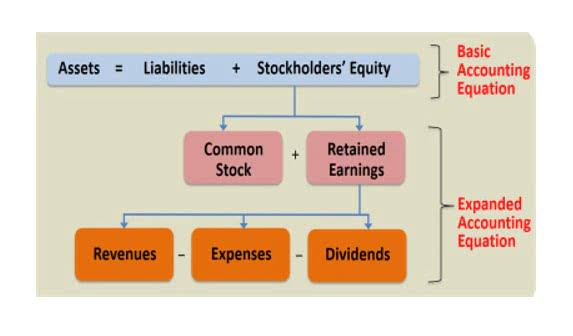
Therefore, contra accounts, though they represent a positive amount, are used to net reduce a gross amount. For this reason, contra accounts are primarily seen as having negative balances because they are used to reduce the balance of another account. My Accounting Course is a world-class educational resource developed by experts to simplify accounting, finance, & investment analysis topics, so students and professionals can learn and propel their careers. In other words, contra revenue is a deduction from gross revenue, which results in net revenue. The sales allowance shows the discounts given to customers when returning the product. This is done to entice customers to keep products instead of returning them.
Everything You Need To Master Financial Modeling
Contra equity reduces the total number of outstanding shares on the balance sheet. The key example of a contra equity account is Treasury stock, which represents the amount paid to which account is an example of a contra-expense account? buyback stock. In the realm of accounting, various techniques are used to ensure financial statements provide an accurate and comprehensive view of a company’s financial health.
How to Record a Contra Account
Overall, while maintaining contra accounts may require additional effort, the benefits they offer in terms of financial transparency and accountability make them an essential tool in accounting. For example, an asset was purchased by a company for $100,000 – that is, the historical cost of the asset was $100,000 – and its contra asset counterpart has a balance of $30,000. Although they all aim at reducing the balance of some type of account, it is useful to have some general foundational knowledge of the different types of accounts. At Invoiced, we provide a suite of solutions that work together to make managing your invoicing, accounts receivable, and accounts payable seamless and easy. To convert your invoice management efforts to an electronic format that can easily share data with other financial systems, businesses can leverage Invoiced’s E-invoice Network.
- Contra Asset Account – A contra asset account is an asset that carries a credit balance and is used to decrease the balance of another asset on the balance.
- And currently, Show-Fleur anticipates that it could only sell each one for roughly $50 thousand, meaning the depreciation per vehicle is $100 thousand.
- This means it received $4,500 in cash but needs to pay $5,000 back to the bondholders.
- That is because some of the bonds are issued at a discount, so this reduces the balance of their bonds payable.
- Understanding their purpose, types, and application is fundamental for accounting professionals and learners alike to ensure accurate financial reporting and informed decision-making within organizations.
- Contra assets decrease the balance of a fixed or capital asset, carrying a credit balance.
What is Accumulated Depreciation?
Key examples of contra asset accounts include allowance for doubtful accounts and accumulated depreciation. Accumulated depreciation reflects the reduction https://www.bookstime.com/ in value of a fixed asset. Accumulated depreciation is a contra asset account used to record the amount of depreciation to date on a fixed asset.

A business called Show-Fleur offers private driving tours of local botanical gardens — all from the comfort of high-end limousines. For its day-to-day operations, the business maintains a fleet of 75 identical 2016 Ford Explorer limousines, each initially retailing at $150 thousand. However, these vehicles have experienced significant wear and tear in the intervening years.


If a reduction or rebate occurs, a credit is made to the contra expense account, which offsets the original expense. This method ensures that the financial statements reflect the net expense, rather than the gross amount, providing a more precise financial picture. A debit will be made to the bad debt expense for $4,000 to balance the journal entry. Although the accounts receivable is not due in September, the company still has to report credit losses of $4,000 as bad debts expense in its income statement for the month. If accounts receivable is $40,000 and allowance for doubtful accounts is $4,000, the net book value reported on the balance sheet will be $36,000. A company might decide to purchase its stock when the board of directors feel the stock is undervalued or when it wishes to pay its shareholders dividends.
- There are two major methods of determining what should be booked into a contra account.
- A contra liability is a general ledger account with a debit balance that reduces the normal credit balance of a standard liability account to present the net value on a balance sheet.
- In the realm of accounting, various techniques are used to ensure financial statements provide an accurate and comprehensive view of a company’s financial health.
- A contra asset account is not classified as an asset, since it does not represent long-term value, nor is it classified as a liability, since it does not represent a future obligation.
- Examples of contra expense accounts include Purchase Returns, Purchase Discounts, and Advertising Reimbursements.
- Hence, the book value of the liability will be the credit balance of the liability account minus the debit balance of its contra liability counterpart.
The account offsets the balance in the respective asset account that it is paired with on the balance sheet. Including contra revenue accounts is important in the income statement because it shows the original amount of sales the firm has made, along with any factor that has reduced that amount. In the books, the account of the asset would have a debit value of $100,000, and the contra asset account would have a credit value of $30,000. If the asset account had a credit balance or the contra asset account had a debit balance, this would indicate an error in the journal entries.
Accounting made for beginners
- Contra asset accounts include allowance for doubtful accounts and the accumulated depreciation.
- Note that accountants use contra accounts rather than reduce the value of the original account directly to keep financial accounting records clean.
- There are four key types of contra accounts—contra asset, contra liability, contra equity, and contra revenue.
- In order to keep the accounts receivables as clean as possible with their historical values, we will use this contra account called allowance for doubtful accounts.
- The Notes Receivable account documents the total value of any promissory notes held by the company.
- Accounts receivable (A/R) has a debit balance, but the allowance for doubtful accounts carries a creditbalance.
- Contra expense accounts have a natural credit balance, as opposed to the natural debit balance of a typical expense account.
- The presence of contra expense accounts significantly influences the presentation and interpretation of financial statements.
- In other words, this account’s credit balance is contrary to (or opposite of) the usual debit balance for an expense account.




